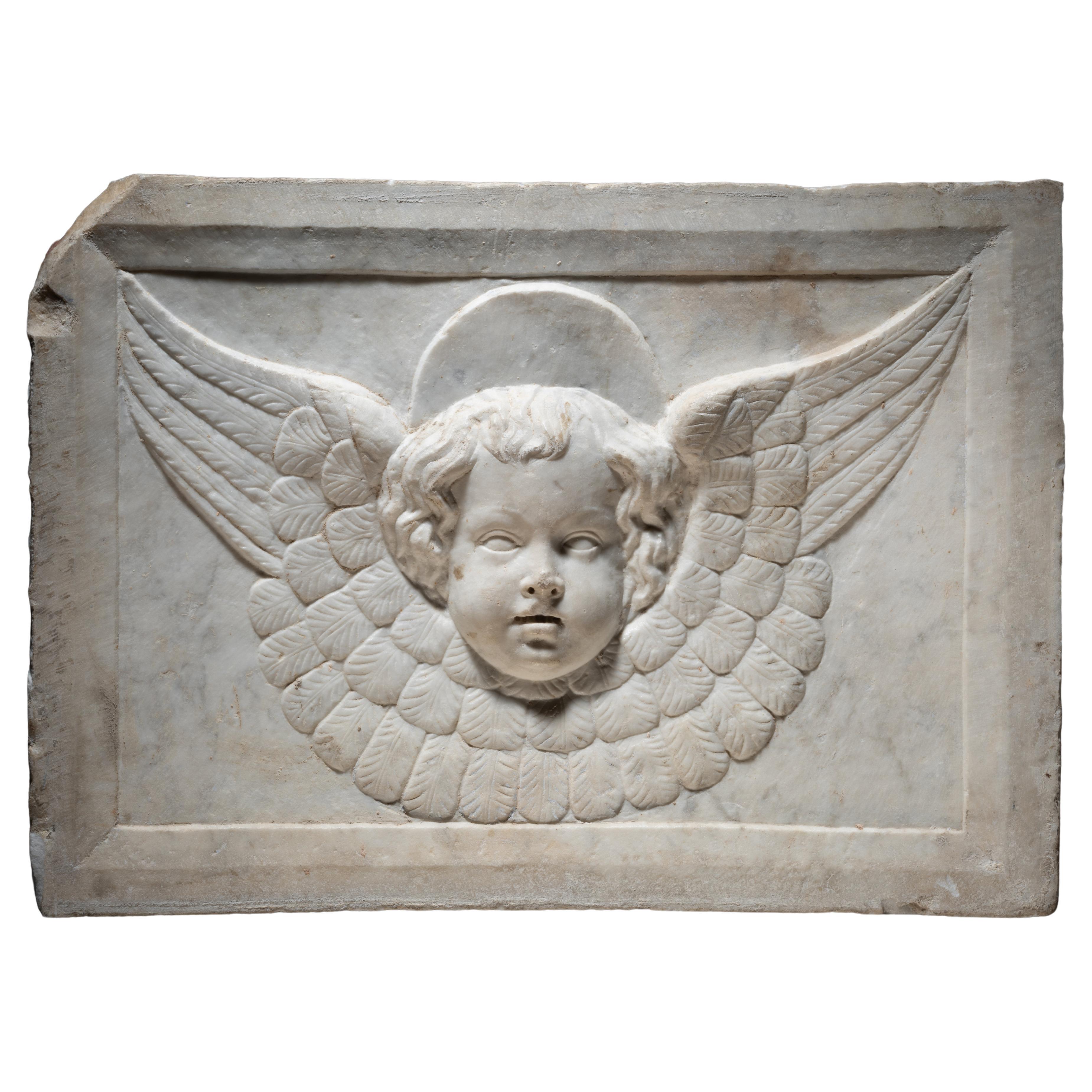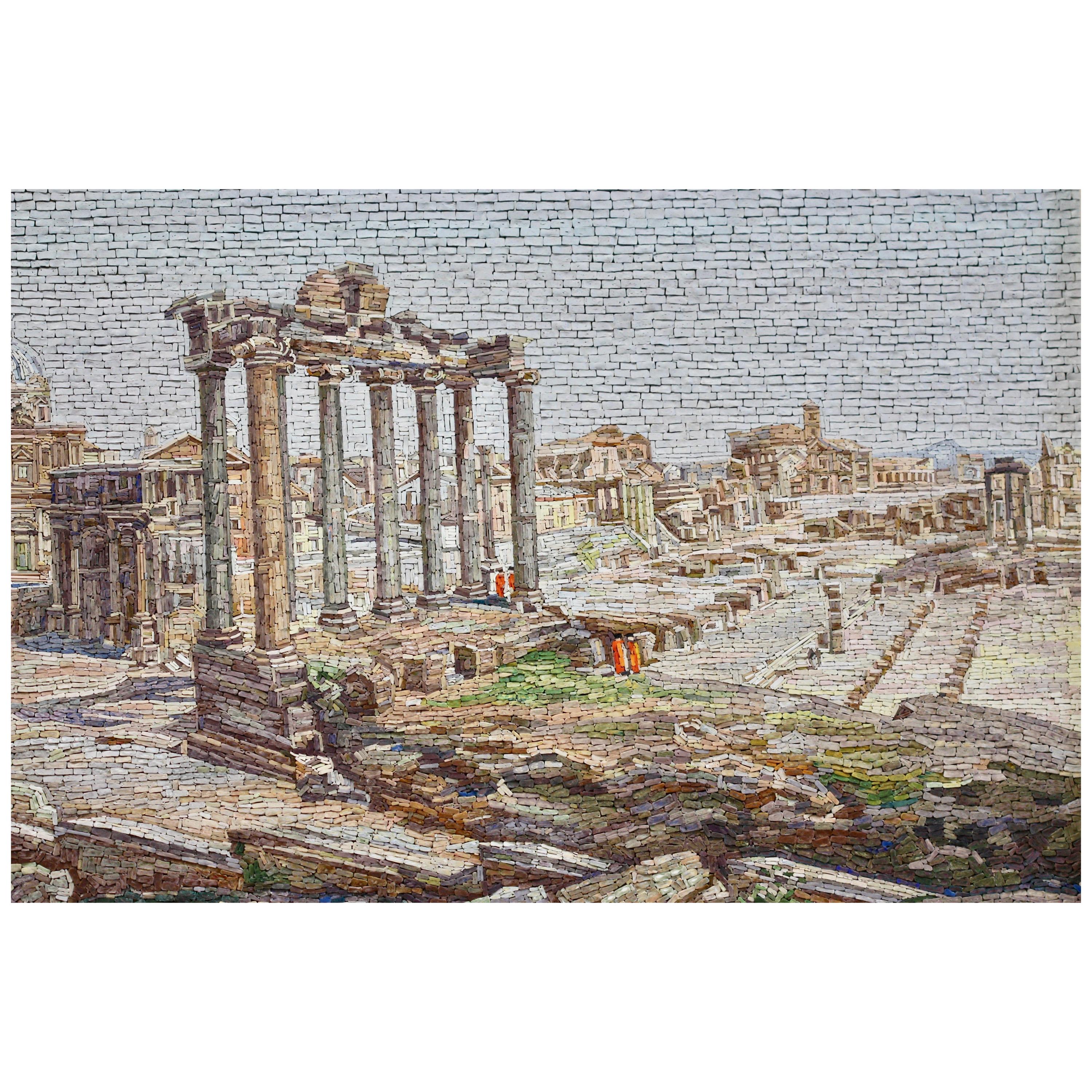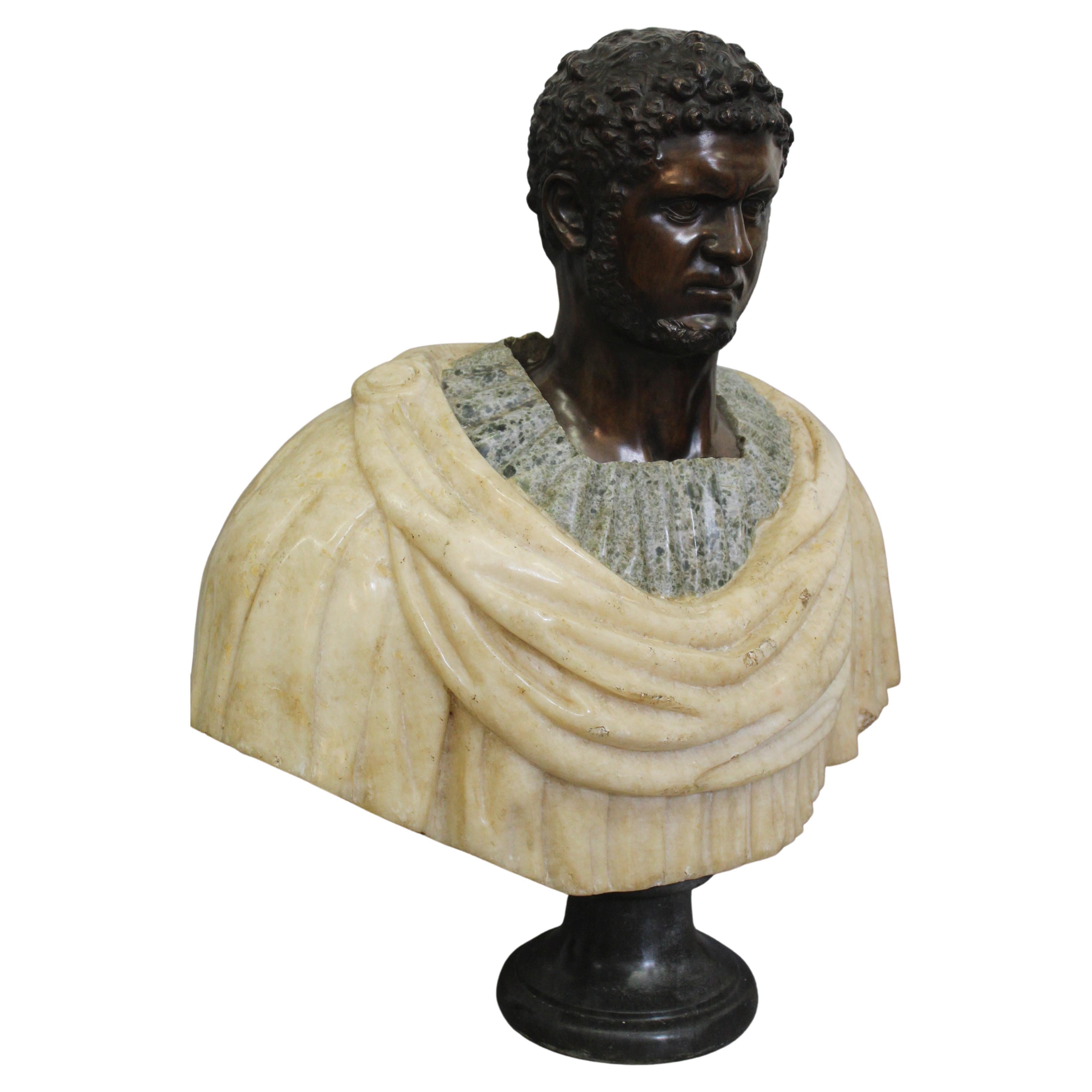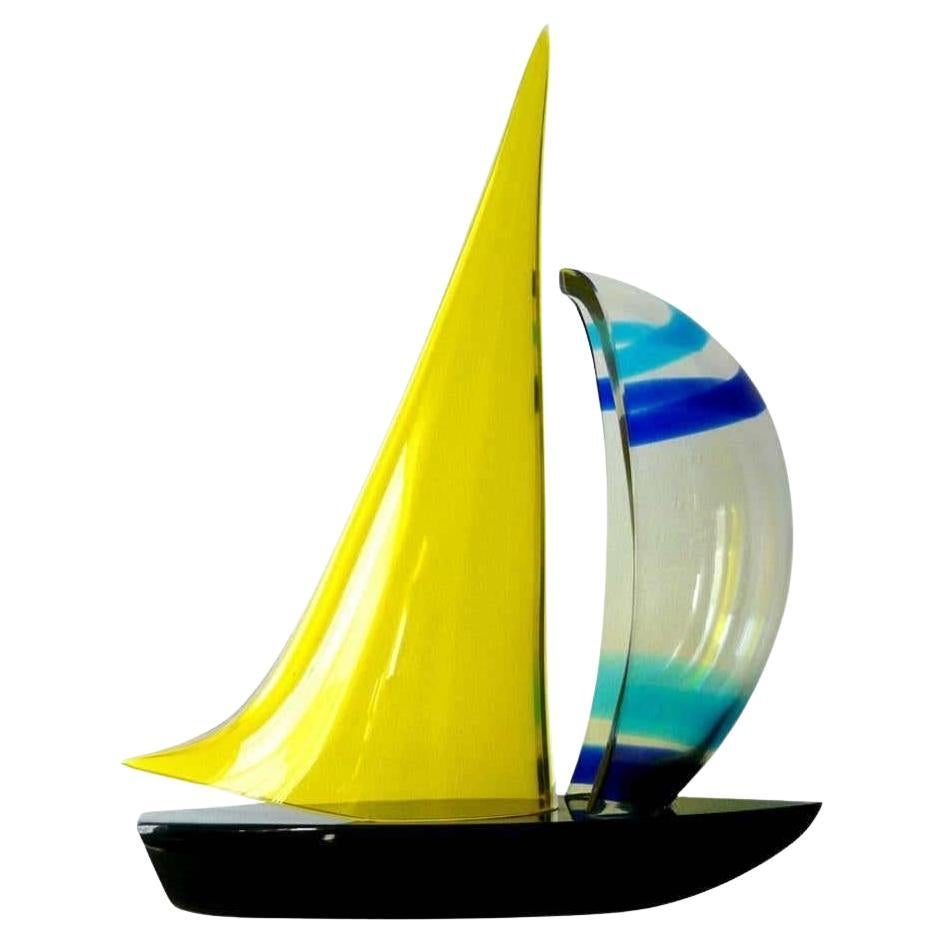Items Similar to Cercle of Romano Alberti, Page, Around 1530-1540
Want more images or videos?
Request additional images or videos from the seller
1 of 5
Cercle of Romano Alberti, Page, Around 1530-1540
About the Item
Cercle of Romano Alberti, dit Il Nero da Sansepolcro ( San Sepolcro, 1521-1568 )
Page
Mixed media : wood core, papier mâché, stucco, polychrome and gilded
Italy, around 1530-1540
88 cm
This page is one of a number of sculptures that are similarly constructed in stucco and wood using the mixed media technique and today attributed To Romano Alberti and his circle. We can appreciate it by focusing on his tunic and his sandals, recalling the earliest sixteenth century Umbrian sculptors, those from San Sepolcro especially. Romano Alberti, better know as Nero today or as Magione Master in the recent past, was surely the most important of them.
Their inner poplar wood structure was usually human being shaped. Some paper-mâché was attached to the sculpture and suddenly covered with some gypsum. Then, as they got dried, he painted the layers carefully.
Bibliographie :
- C. Galassi, Sculture da vestire : Nero Alberti da San Sepolcro e la produzione di manichini lignei in una bottega del Cinquecento. Firenze Electa ; Editori Umbri Associati, 2005
- C. Galassi, « Arte e serialità nella bottega di Nero Alberti a Sansepolcro », In Nero Alberti, 2005
- E. Neri. Lusanna, « Tra arte e devozione : la tradizione dei manichini lignei nella scultura umbro-marchigiana della prima metà del Cinquecento » in G. B. Fidanza, scultura e arredo in legno fra Marche e Umbria, Atti del Primo convegno, Pergola 24-25 ottobre 1997, Perugia 1999.
- Dimensions:Height: 34.65 in (88 cm)Width: 13.78 in (35 cm)Depth: 7.49 in (19 cm)
- Style:Renaissance (Of the Period)
- Materials and Techniques:
- Place of Origin:
- Period:
- Date of Manufacture:16th Century
- Condition:Wear consistent with age and use.
- Seller Location:Bruxelles, BE
- Reference Number:1stDibs: LU6666229644172
About the Seller
5.0
Vetted Seller
These experienced sellers undergo a comprehensive evaluation by our team of in-house experts.
1stDibs seller since 2022
6 sales on 1stDibs
Typical response time: 7 hours
- ShippingRetrieving quote...Ships From: Bruxelles, Belgium
- Return PolicyA return for this item may be initiated within 3 days of delivery.
More From This SellerView All
- Cercle of Jacopo della Pila - Marble relief depicting a winged CherubLocated in Bruxelles, BECercle of Jacopo della Pila (Lombard, in Naples 1471-1502) Marble relief depicting a winged Cherub Naples, second half of15th century 40 x 57 x 12 cm Exquisitely carved, this relief portrays a winged cherub with cascading hair and delicate features. The cherub's plump, smooth countenance, rounded cheeks, outlined lips, and finely drawn nose emanate a sense of tenderness. The quadrangular module, is adorned with a carved frame. The relief ascends gradually, transitioning from the low relief of the wings to the high relief of the head. The rectangular frame and the subtly curved form of the artwork suggest that the relief likely adorned the upper part of an arch or a vaulted chapel. The type is that of the perspective room with a coffered ceiling decorated with figures of winged cherubs, which is found in various Neapolitan chapels of the 15th century. Coffered ceilings attest to the recovery of antiquity and the search for luxury in Renaissance architecture, first in Florence, then in Rome and Naples. The majority of the numerous family chapels and tombs built during the late fifteenth century in south of Italy employ the new formal vocabulary of the Florentine Renaissance in a self-confident manner that permitted a broad spectrum of variations. The escalating admiration for the classical world, coupled with the development of perspective, significantly contributed to the Renaissance endorsement of coffered ceilings. This artistic and constructive device drew inspiration from the intricate marble patterns observed in historical landmarks such as the Arch of Titus, the Temple of Vesta in Tivoli, the Pantheon, and the Basilica of Maxentius. A distilled product of both mathematical and artistic cultures, deeply scrutinizing the ancient world, the coffered ceiling plays a vital role in the perspective construction of space with its regular and directional geometry. The motif of the coffered ceiling decorated with cherubs in relief was introduced in Naples by Francesco Laurana in the plastic decoration of the Arch of Castelnuovo. Laurana's impact on the art scene in the south of Italy was profound. The introduction of the winged cherub into the region's artistic vocabulary bridged the gap between the classical and the contemporary, creating a synthesis that resonated with both aesthetic and spiritual sensibilities. His influence extended beyond the immediate visual appeal, shaping the cultural identity of the Renaissance in southern Italy. Although the plastic decoration of the Arch of Castelnuovo cannot certainly be ascribed to a mature Renaissance style, it was precisely on this occasion that the sculptors who worked there could get to know and export throughout the Italian peninsula that type of "Florentine classicism" which, even in the 15th century Naples, was conditioned by the Burgundian culture imported into the Kingdom by Alfonso of Aragon himself, with artists called from Spain and Northern Europe. The coffered ceiling, with its geometric patterns and Laurana's winged cherubs nestled within, became a symbol of refinement and cultural sophistication. The relief sculptures, carefully integrated into the overall design, transformed the ceiling into a celestial realm, inviting viewers to contemplate the divine while immersed in the grandeur of the Renaissance space. Similar winged cherubs appears also in the Naples cathedral. Within the renowned Succorpo Chapel, a mesmerizing marble coffered ceiling adorned with cherubs epitomizes the splendor of the Neapolitan Renaissance. The interplay of light and shadow on the textured surface of the marble coffered ceiling introduces an ethereal dimension, providing an immersive visual experience for observers. The geometric precision and the repeated patterns, reminiscent of classical motifs, establish a sense of harmony and balance that has become the hallmark of the Neapolitan interpretation of Florentine Renaissance aesthetics. Although probably intended to be admired from a distance, this cherub is intricately detailed and exquisitely rendered: the face and hair are elegantly outlined and the feathers are textured through juxtaposed lines. The marble, both figurative and decorative, adheres to the principles of balance and restrained ornamentation typical of the « Florentine Classicism ». Harmonious shapes and gracefully orchestrated curves , rooted in the classical repertoire, converge to evoke a sense of ethereal beauty. The surface displays the masterful use of a chisel to intricately carve the feathers and facial features, creating an almost abstract quality. This work is a testament to a sculptor of great skill and rich figurative knowledge, seamlessly blending classical firmness in contours with a refined treatment of the marble's surface. The combination of tradition and innovation point to a stylistic idiom from Lombardy, in particular we can find some comparaisons with the works of Jacopo della Pila, sculptor of Lombard origin working in Naples in the second half of the 15th century. He is documented there between 1471 and 1502, and is a protagonist of the Aragon Renaissance in the second half of the Quattrocento, together with the other great Northern sculptor active in the kingdom, Domenico Gagini. the first commission he received dates back to August 9, 1471, when Jacopo publicly committed to sculpting the funerary monument of Archbishop Nicola Piscicelli to be placed in the Cathedral of Salerno. The last known work is an altar ordered on July 29, 1502, by the noble Jacopo Rocco for the church of San Lorenzo Maggiore in Naples. Between these two chronological extremes (1471-1502), we must place the fervent activity of the artist, who had trained in Rome, perhaps under the guidance of Paolo Romano but also engaged in dialogue with other major artists of the city, especially Isaia da Pisa. He enriched his experience in Naples, initially drawing inspiration from the works of Domenico Gagini and later from the Tuscan masterpieces of Antonio Rossellino and Benedetto da Maiano destined for the church of Santa Maria di Monteoliveto. Jacopo della Pila's artistic personality is thus based on a complex interplay of influences, contributing to the definition of a highly personal style. Close comparaison can be made between our cherub and the winged angels reliefs...Category
Antique 15th Century and Earlier Italian Renaissance Figurative Sculptures
MaterialsMarble
- Cercle of Juan Martinez Montañés '1568-1649', Infant St John the BaptistLocated in Bruxelles, BECercle of Juan Martinez Montañés (1568-1649) Infant St John the Baptist Spanish, 17th century H 74 cm Saint John the Baptist is here represented naked, sitting on a rock, with...Category
Antique 17th Century Spanish Renaissance Figurative Sculptures
MaterialsWood
- Fra Mattia Della Robbia, Saint Joseph, Tuscany, Around 1505-1510By Della RobbiaLocated in Bruxelles, BEFra Mattia Della Robbia (Firenze 1468-1534) Saint Joseph Terracotta Tuscany, around 1505-1510 55 x 40 x 30 cm Marco della Robbia the Younger (April 6, 1468 in Florence - 15...Category
Antique 16th Century Italian Renaissance Figurative Sculptures
MaterialsTerracotta
- Adoration of the Magi, Flanders, 17th CenturyLocated in Bruxelles, BEThe Adoration of the Magi. Panel carved in high relief. Flanders, 17th century. Measures: 53 x 32,5 cm.Category
Antique 17th Century Dutch Renaissance Figurative Sculptures
MaterialsWood
- Hercules Holding a Coat of Arms, Flemish, XVII CenturyLocated in Bruxelles, BEHercules holding a coat of arms Flemish, XVII century White and black marble Measures: 67 x 32 x 19 cm Hercules is depicted naked, holding a coat of arms with the right hand an...Category
Antique 17th Century Belgian Renaissance Figurative Sculptures
MaterialsMarble, Belgian Black Marble
- Group of Altarpiece - Antwerpen, 16th centuryLocated in Bruxelles, BEGroup of altarpiece representing the life of a Saint, Saint Renualde? Engraved by the sign of Antwerp hand on the hat of the central character Carved oak, traces of polychromy Fir...Category
Antique 16th Century Belgian Renaissance Figurative Sculptures
MaterialsOak
You May Also Like
- Large Roman Mosaic Plaque of Foro Romano "Cavi"Located in West Palm Beach, FLLarge Roman Mosaic Plaque of the Foro Romano after Giuseppe Guzzard Fabricated in the workshops of Saint Peters, Rome Vatican Workshops, 20th century ...Category
20th Century Mounted Objects
MaterialsGlass
- Carved Sculpture by Umberto RomanoBy Umberto RomanoLocated in Sagaponack, NYAn abstracted sculpture of a face, finely carved in earth toned volcanic stone. Signed by the artist.Category
Vintage 1950s American Mid-Century Modern Sculptures
MaterialsStone
- Busto Di Imperatore Romano, CaracallaLocated in Rome, ITBusto di imperatore Romano, Caracalla con testa in bronzo e marmi di pregio, xx secolo, privata collezione Bust of Roman emperor, Caracalla with bronze head and precious marbles, 20...Category
Vintage 1950s Busts
MaterialsMarble, Bronze
- Sailboat Sculpture by Romano Dona'By Romano DonàLocated in Los Angeles, CAVintage Italian double sail boat hand blown and crafted in black, yellow, clear, navy blue and baby blue Murano glass by by Romano Dona' Signed “MURANO” on...Category
Vintage 1980s Italian Figurative Sculptures
MaterialsMurano Glass
- Pair of Italian Renaissance Iron Page FiguresLocated in New York, NYPair of Italian Renaissance style (19/20th Cent) iron life size page figures holding torch.Category
Antique Late 19th Century Italian Renaissance Revival Sculptures
MaterialsIron
- Page Vase by Fakasaka DesignLocated in Geneve, CHPage vase by Fakasaka design. Dimensions: W 16 cm D 16 cm H 35.5 cm. Materials: dark bronze. Fakasaka is a design company focused on product...Category
2010s Brazilian Modern Vases
MaterialsBronze
Recently Viewed
View AllMore Ways To Browse
Antique Page
16th Century Italian Wood
Antique Paper Mache
Paper Mache Antique
Antique Stucco
Stucco Antique
Antique Media Furniture
16th C Italian
Renaissance Wood Sculpture Italian
Gypsum Used
Wood Sandal
Decorative Renaissance Polychrome
Firenze Wood
Furniture Umbria
Papier Mache Italian
E Romano
16th C Sculpture
Gilded Mache





